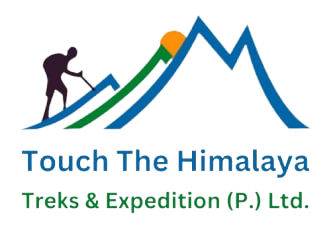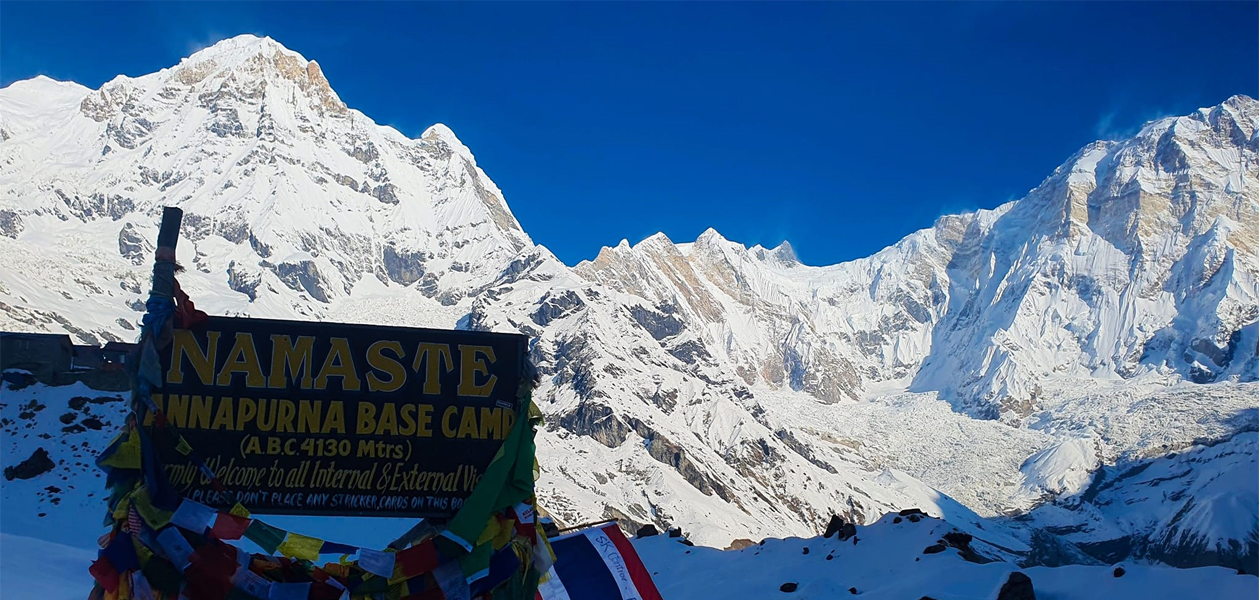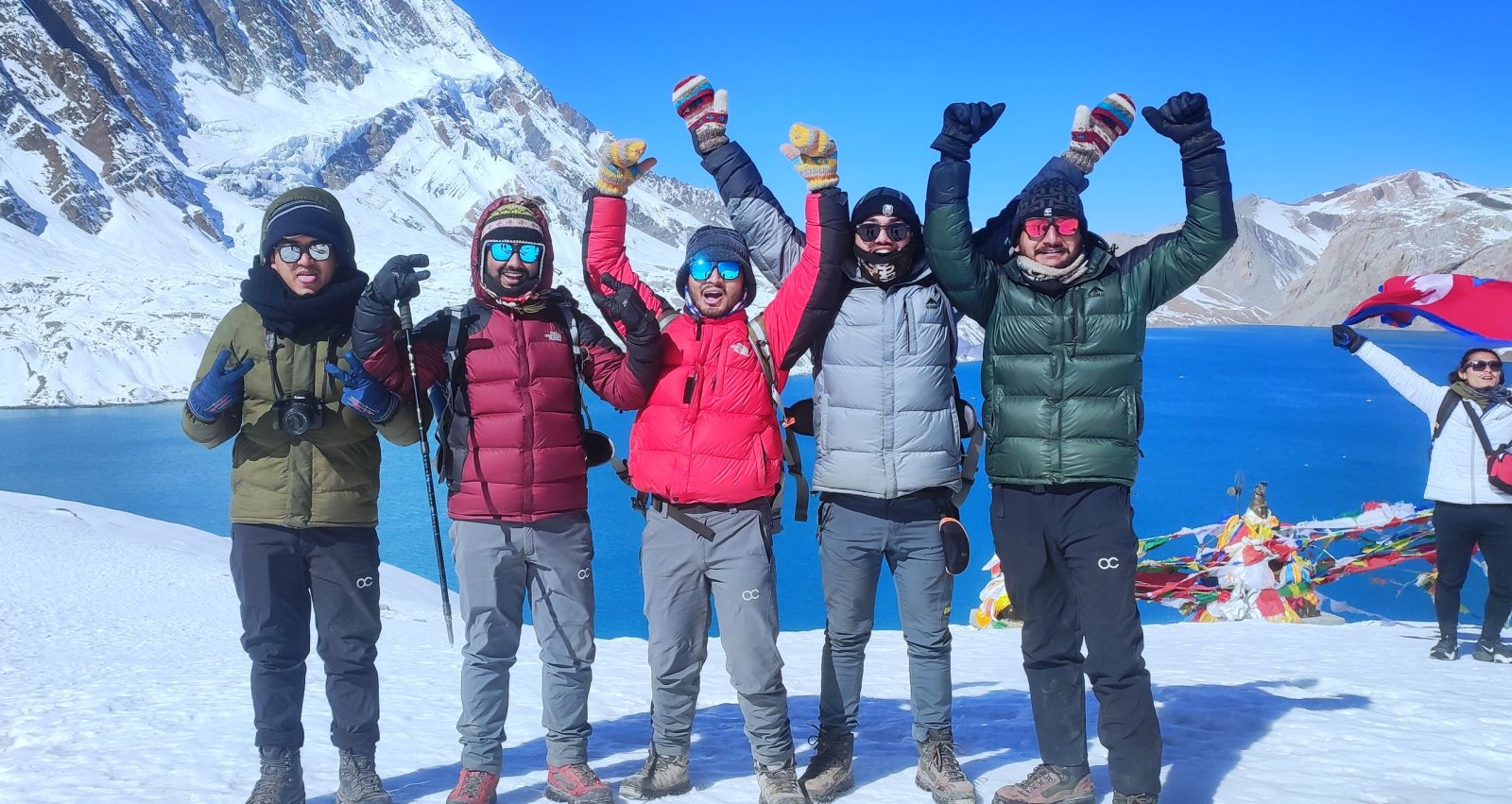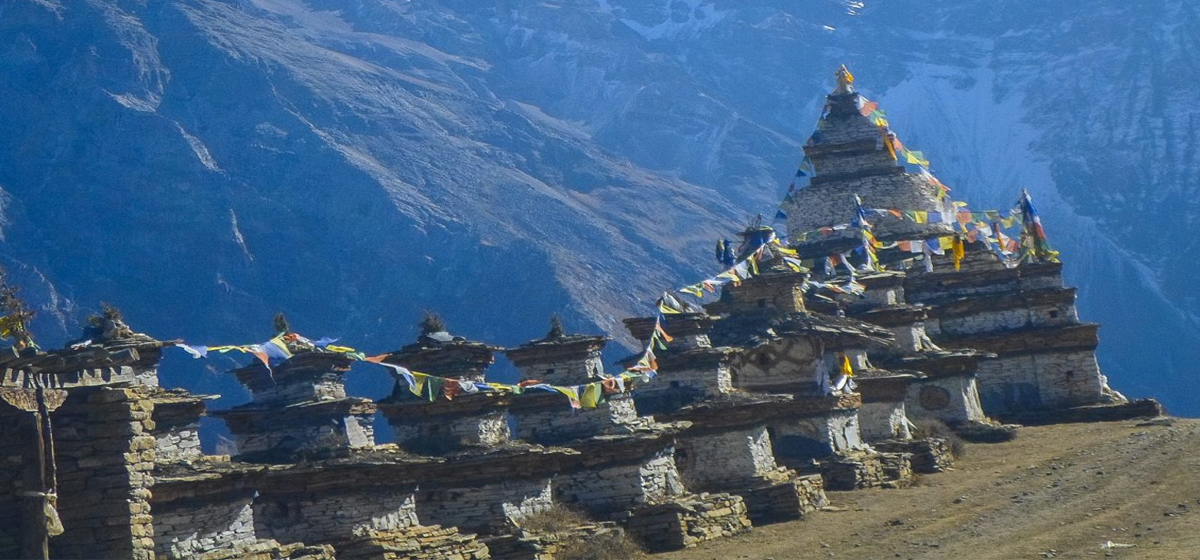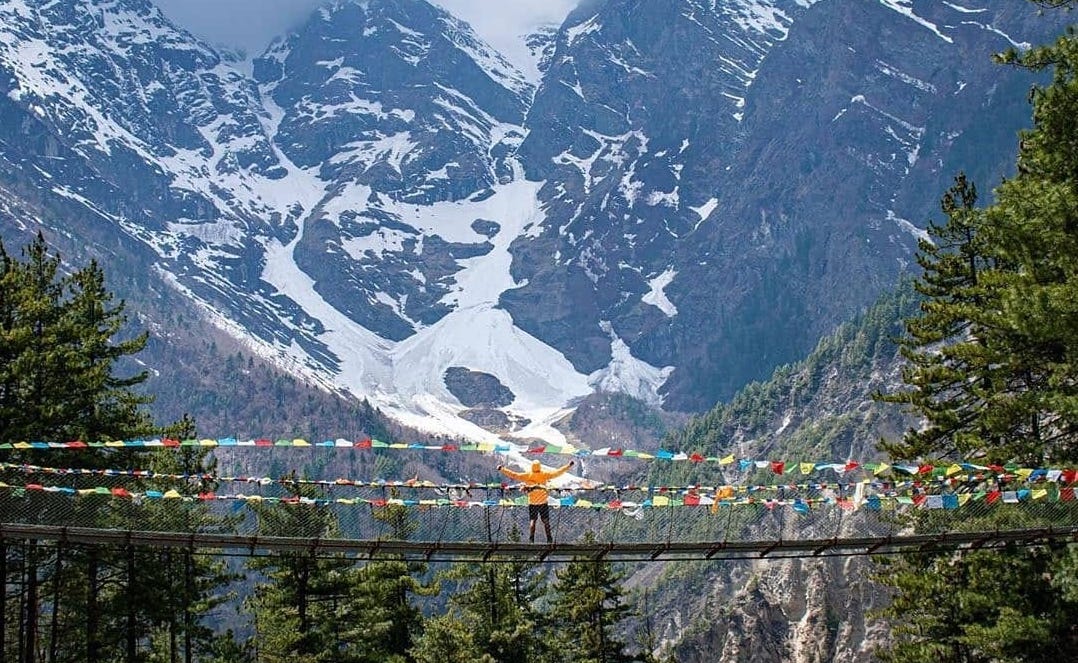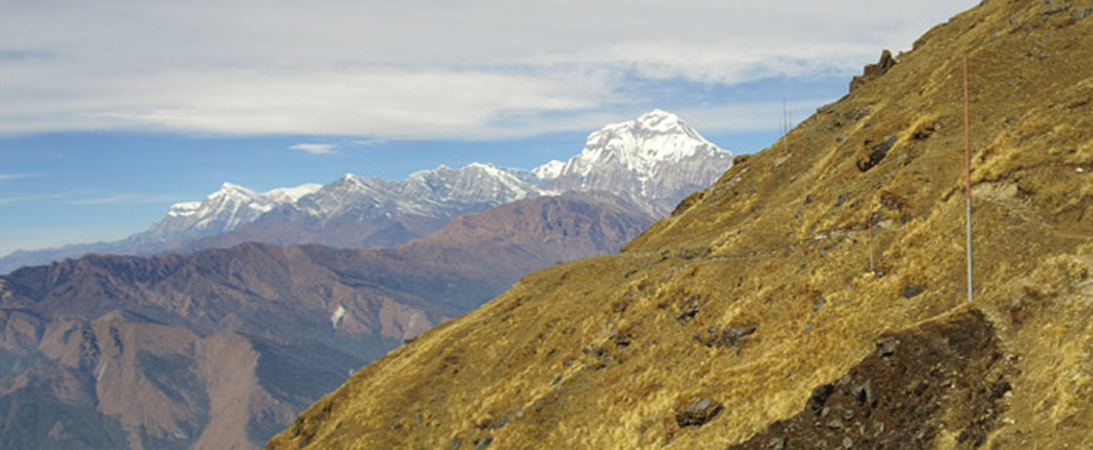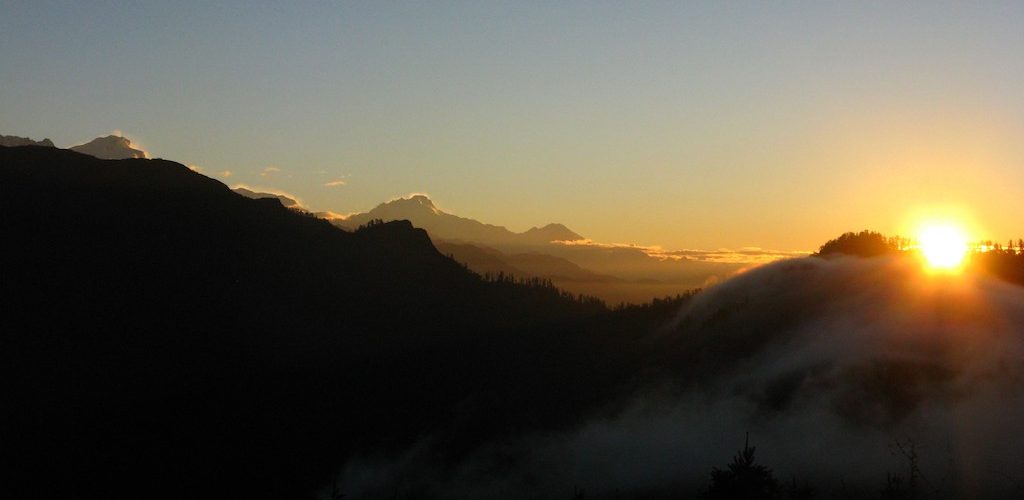Jomsom To Muktinath Trek - 14 Days
World Famous Trek-
Duration
14 Days
-
Activity
Trekking
-
DifficultyModerate Trek
These treks are slightly more challenging than easy treks and require a moderate level of physical fitness. The altitude may go up to 4,000 meters, and the terrain can be rugged and steep at times. The trails are usually well-defined, but there may be some uphill climbs and rocky sections. Examples of moderate treks in Nepal are the Annapurna Base Camp Trek, Everest Base Camp Trek, and the Langtang Gosainkunda Trek
-
Max. Altitude
3700 M
-
Starts
Kathmandu
-
Ends
Kathmandu
-
Group Size
Minimum: 2 pax
-
Best Season
March-May/Sept-Dec
PRICE PER PERSON
- 1 PAX US$928
- 2 PAX US$844
- 3 PAX US$802
- 4 PAX US$796
- 5-10 PAX US$781
- 11-20 PAX US$765
- Highlights
- Itinerary
- Route Map
- What Included / Excluded
- Dates & Availability
TRIP HIGHLIGHTS
- Diverse landscapes, from lush green valleys and terraced fields to arid desert-like terrain.
- Breathtaking views of majestic Himalayan peaks, including Annapurna, Dhaulagiri, Nilgiri, and others.
- Kali Gandaki River, which flows through the deepest gorge in the world.
- Muktinath Temple, a significant religious site for both Hindus and Buddhists.
- Encounter monasteries, chortens (Buddhist shrines), prayer flags, and experience the warm hospitality of the local people.
- Chance to taste fresh apples and products like apple cider, apple pie, and dried apples.
- Excellent points to witness mesmerizing sunrises and sunsets over the Himalayas.
- Walk through forests, cross suspension bridges over gushing rivers, and encounter waterfalls along the way.
- Comfortable teahouse accommodation along the route with basic amenities, warm meals, and a cozy place to rest.
- Enclosed by a ring of inspiring mountains, including Annapurna I at 8091m
- Beautiful and traditional villages selected for meals and accommodation.
Jomsom Muktinath Trek:
The Jomsom Muktinath Trek is a popular trekking route located in the Mustang region of Nepal. It is a part of the Annapurna Circuit Trek, which is one of the most reknowned trekking routes in the world. The Jomsom Muktinath Trek is a relatively shorter trek compared to the entire Annapurna Circuit, but it still offers breathtaking views of the Himalayas and a unique cultural experience. To the Hindu, Muktinath is a sacred as the place of salvation. They believe that to wash in the water here guarantees salvation after death. To the Buddhist it is the place that the great sage Guru Rinpoche (Padmasambhava) meditated at, and to all, it is the source of fossillzed ammonites, known locally as shaligrams that are found all along the upper reaches of the Kaligandaki River Valley.
As you trek towards Muktinath, you’ll come across the village of Kagbeni. This ancient village is known for its narrow alleys, traditional houses, and a centuries-old monastery. The village provides a glimpse into the traditional Mustangi way of life. Lubra is a hidden gem located off the main trekking route. It is a traditional village inhabited by the Lubra community, known for their unique cultural practices and traditional lifestyle. The village offers a peaceful and authentic experience away from the crowds.
The Muktinath Temple is the main highlight of the trek. It is a sacred pilgrimage site for both Hindus and Buddhists. Explore the temple complex, where you’ll find 108 water spouts, natural gas fires, and the main deity, Lord Vishnu. Take part in the religious rituals and soak in the spiritual atmosphere. Jharkot is a beautiful village located close to Muktinath. The village is known for its ancient fortress, the Jharkot Palace. Explore the narrow alleys, visit the monastery, and enjoy panoramic views of the surrounding mountains.
Marpha is a charming village famous for its apple orchards and apple products, such as apple brandy and apple pies. Take a stroll through the village, taste the local apple delicacies, and visit the local monastery. On your way back from Muktinath, you can visit Tatopani, which means “hot water” in Nepali. Tatopani is renowned for its natural hot springs, where you can relax and rejuvenate your tired muscles after the trek.
The Jomsom Muktinath Trek offers breathtaking views of the Annapurna and Dhaulagiri mountain ranges, including peaks like Nilgiri, Tukuche, and Dhampus. The trek takes you through diverse landscapes, ranging from lush green valleys to arid desert-like terrain. You’ll pass through charming traditional villages, apple orchards, and alongside the Kali Gandaki River, which is one of the deepest gorges in the world. The trek passes through charming traditional villages inhabited by ethnic communities like Thakali and Gurung. These villages offer a glimpse into the local way of life, with their unique architecture, terraced fields, and cultural practices.
The Jomsom region is famous for its apple orchards. During the trek, you’ll have the chance to taste fresh apples and products like apple cider, apple pie, and dried apples. Along the trekking route, you’ll find comfortable teahouses that offer basic accommodation and meals. Staying in teahouses allows you to experience the local way of life and connect with fellow trekkers from around the world. It’s a great opportunity to share stories, enjoy delicious meals, and relax in a cozy environment after a day of trekking.
The trek involves walking on various terrains, including rocky paths, riverbanks, and sometimes windy areas. Some sections may require ascending steep trails, and you may encounter strong winds in the higher altitudes. While the trek doesn’t reach extreme altitudes, proper physical fitness and trekking gear are essential. The trek starts from Jomsom, a town located in the Kali Gandaki River Valley. Jomsom is easily accessible by flight from Pokhara, and the town serves as a gateway to the Mustang region. Take some time to explore the town, visit the local market, and observe the unique culture and architecture of the region.
Culture:
The Jomsom Muktinath trek takes you through the culturally significant region of Mustang, which is strongly influenced by Tibetan Buddhist culture. You will come across traditional Tibetan-style villages, ancient monasteries, prayer wheels, and colorful prayer flags. The local inhabitants of the region are predominantly of Tibetan origin and follow Tibetan Buddhism. The trek provides an opportunity to immerse yourself in their unique culture, witness religious ceremonies, and interact with the warm and welcoming local people.
Biodiversity:
The Jomsom Muktinath trek offers a diverse range of landscapes and ecosystems, resulting in a variety of biodiversity. As you trek through the trail, you will encounter different vegetation zones. In the lower regions, lush forests of pine, oak, and rhododendron trees flourish. As you ascend to higher altitudes, the landscape transitions into arid, desert-like terrain with sparse vegetation.
Climate:
The climate in the Jomsom Muktinath region is generally dry and windy due to its location in the rain shadow of the Annapurna and Dhaulagiri mountain ranges. The trekking season, which is considered the best time to undertake the Jomsom Muktinath trek, is during spring (March to May) and autumn (September to November). During these seasons, the weather is typically dry and stable with clear skies. Daytime temperatures in lower elevations range from 10°C to 20°C (50°F to 68°F), while higher elevations can be cooler, ranging from 0°C to 15°C (32°F to 59°F). However, it’s important to note that temperatures can drop significantly at night, especially at higher altitudes.
Difficulty Level:
The Jomsom Muktinath trek is considered a moderately difficult trek suitable for trekkers with a reasonable level of fitness and some prior hiking experience. The trek involves both ascents and descents, and the maximum elevation reached is around 3,800 meters (12,467 feet) at Muktinath. While the altitude gain is not extreme, it is important to take proper acclimatization measures to avoid altitude sickness. The trail can be rocky and dusty in some sections, and the windy conditions in the region can add to the challenge. However, compared to other treks in the Annapurna region, the Jomsom Muktinath trek is relatively less challenging.
Duration:
The duration of the Jomsom Muktinath trek can vary depending on the specific itinerary and individual trekking pace. On average, the trek takes around 11 to 14 days to complete. The trek usually starts from Jomsom, which can be reached by a short flight from Pokhara. From Jomsom, the trail passes through Kagbeni, Marpha, and other picturesque villages before reaching the holy site of Muktinath. Trekkers can choose to extend or modify their itinerary based on their preferences, adding side trips or exploring nearby areas.
Best Time to Trek:
The ideal seasons for the Jomsom Muktinath Trek are spring (March to May) and autumn (September to November). During these months, the weather is generally clear, with stable temperatures and excellent mountain views. Winter treks are possible but can be cold, and the monsoon season (June to August) brings rain and limited visibility.
Equipments:
For the Jomsom Muktinath trek, you will need sturdy hiking boots with good ankle support, moisture-wicking clothing to stay comfortable in varying weather conditions, and insulating layers to keep warm at higher elevations. Don’t forget to pack a waterproof and windproof jacket and pants for protection against rain and strong winds. Trekking poles provide stability on the rocky terrain, and a well-fitted backpack is essential for carrying your essentials. A lightweight sleeping bag suitable for cold temperatures, a headlamp or flashlight for low light conditions.
Accommodation:
Touch the Himalayas ensures comfortable accommodation for trekkers during the Jomsom Muktinath trek. We arrange clean and cozy tea houses or lodges along the trekking route. These tea houses provide basic amenities such as beds, blankets, and common dining areas. We select accommodation options that prioritize cleanliness and comfort to ensure a pleasant stay for our trekkers.
Meals:
We provide nutritious meals to keep trekkers energized throughout the Jomsom Muktinath trek. We offer a variety of hygienic and locally sourced food options, including traditional Nepali dishes and international cuisine. Our experienced cooks and kitchen staff ensure that meals are prepared with utmost care and consideration for dietary preferences or restrictions.
Guides:
Touch the Himalayas offers knowledgeable and experienced trekking guides who accompany trekkers during the Jomsom Muktinath trek. Our guides are familiar with the route, local culture, and safety protocols. They provide valuable insights, assist with navigation, and ensure the well-being of trekkers throughout the journey. Our guides are also trained to handle emergencies and offer first aid assistance if needed.
Insurance:
We highly recommend travel insurance for the Jomsom Muktinath Trek, and we can assist you in acquiring suitable coverage. We work with reputable insurance providers to help you obtain comprehensive insurance that includes high-altitude trekking and helicopter evacuation in case of emergencies. We want to ensure that you are adequately protected throughout your trekking journey.
Permits:
We assist trekkers in obtaining the necessary permits for the Jomsom Muktinath trek. We guide trekkers through the permit application process and facilitate the acquisition of the necessary permits, such as the Annapurna Conservation Area Permit (ACAP) and Trekkers’ Information Management System (TIMS) card. We ensure that all necessary permits are obtained in compliance with local regulations, allowing trekkers to focus on their trekking experience.
All the trip grading can be view here.
If you have any confusion for booking process please visit our booking process.
Itinerary
Arrive Kathmandu and Transfer to hotel
Trek Preparation and Kathmandu Sightseeing
Drive to Pokhara by Tourist Bus, Car or flight
Pokhara to Nayapul and trek to Tikadhunga (1480m)
Tikhedhunga - Ghorepani (2850m)
Ghorepani - Poon hill - Tatopani (2540 m)
Tatopani to Ghasa [2,110m/6,922ft]: 5-6 hrs.
Ghasa to Marpha [2,680m/8,792ft]: 4-5hrs.
Marpha to Kagbeni [2,810/9,218ft]: 4-5 hrs.
Kagbeni to Muktinath [3,710m/12,170ft]: 5-6 hrs
Muktinath to Jomsom [2,715m/8,910ft]: 5-6 hrs.
Jomsom to Pokhara by flight 30 min
Drive back to Kathmandu
Departure Flight Back to Say Goodbye and good and safe journey
Itinerary Note:
This itinerary is just the guide line, it can be changed (longer or shorter) as per our client's wishes, fitness, ground reality and weather condition. If you're not satisfied or have an alternative plan please feel free to discuss it with us By Clicking :- ASK QUESTION or COSTOMIZE YOUR TRIP.What's Included / Excluded
Cost Incluldes
- Airport picks up and drops off by Car, jeep, Hiace, or Bus. Depends on the number of arrives.
- Complimentary welcome or farewell dinner according to the suitability of our client’s time.
- Beginning two nights stay on arrival in Kathmandu in a tourist standard hotel with breakfast included (twin share basis)
- Internal transport and flight within Nepal as per the itinerary.
- All necessary trekking and permit & fees, (Entry Permit, Annapurna special permit and TIMs cards)
- OPTIONAL: Three meals a day during the trek (If of required, we provide meal during the trekking)
- OPTIONAL: All accommodation during trek (If of required we arrange all accommodation)
- An experienced, English-speaking, government-licensed, first aid-trained special trekking guide and assistant guide (5 trekkers: 1 assistant guide)
- An expert Annapurna porter (2 trekkers: 1 porter)
- Duffel bag, (to be returned after trip completion), complementary trekking maps. If needed down jacket and sleeping bag will be provided in rent.
- Staff costs include their salary, insurance, equipment, transport, food, and accommodation.
- Rescue arrangements if necessary.
- Basic First-aid kit (carried by your trekking guide)
- All government and local taxes for Trekking, Agency service charges and government tax/vat.
- Achievement Certificate
Cost Excludes
- International airfare and Nepal visa fee.
- Lunch and Dinner in Kathmandu
- Extra night accommodation in Kathmandu because of early arrival, late departure, early return from mountain (due to any reason) than in the scheduled itinerary
- Meal and accommodations. (can be arranged by company as per the package agreement )
- Personal insurance which covers medical, emergency evacuation, loss or theft of property.
- Personal gears and equipment.
- Personal expenses such as laundry, hot showers, battery charging, Wifi, etc
- Entry fees and costs in sightseeing (temples, monasteries, etc)
- Tips and gratitude provided to guide and porter.
Fixed Departure
Can't find trip as your Schedule Date?
- Above mentioned departure dates “AVILABLE”‘ means these dates are currently open for bookings for the particular Trek. If the mentioned dates are not suitable with your preferred date, you can make your own private trip by clicking the box billow in the bottom.
- A date “GUARANTEED” means that we give guarantees that the costumers will be able to start theirs trek on the specified date, regardless of whether the seats are fully booked or not.
- “LIMITED”‘ Status refers to a type of seats booking for the trek, that has been certain seats available to book
- In the status, “CLOSED” means that the Trekkers seats are fully booked and there are no more seats available for new booking. Trekkers may be put on a waitlist for a chance to get a seat if there are cancellations unless your are requested to plan your own private trip by clicking the box billow in the bottom.
